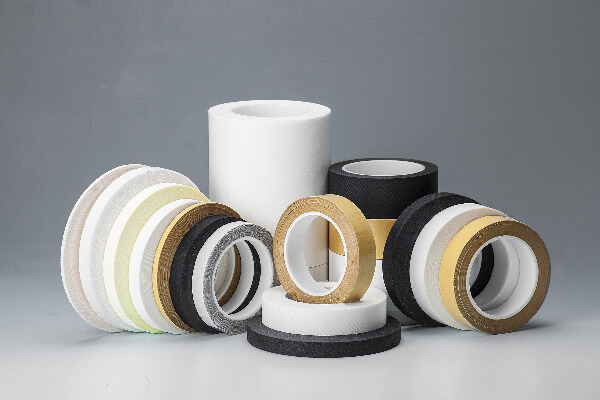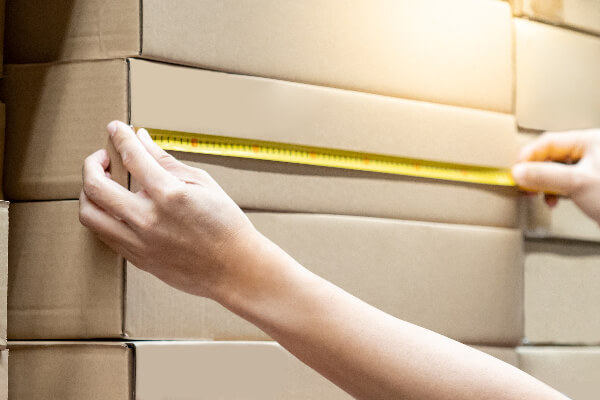Container shipping is one of the easy and secure ways to export your goods. However, we cannot deny its importance in e-commerce international shipments. In 2022, the container shipping industry has made over 208 billion in profit. That’s double its profit in 2021. This statistic proves the surging demand for shipping goods via containers.
If you have been advised to use container shipments for your e-commerce business. And, you are looking to understand how to save even more on your shipments, you should know about CBM. In this blog we will explain what CBM means in shipping, how to calculate CBM, and much more, so keep reading.
What Does CBM Mean in Shipping?

CBM is a measuring unit. Shipping companies use this measuring unit to measure the volume of your shipment. It’s calculated by multiplying the goods’ length, width, and height. Companies usually use this calculation method when customers choose LCL (less-than-container load) shipment for their goods.
This method helps them determine the cargo’s exact space in a container. By understanding CBM, businesses can package their cargo in a way to utilizes every inch of space for which they are charged. This helps optimize your shipping strategy and reduce costs by maximizing the space used.
There are two types of measurements usually used by carrier companies and the fee is charged based on cargo weight or on goods volume. Often, companies are charged based on package weight. But what if the shipped package is highly lightweight and takes more space in the container? If carrier companies charge such packages based on their weight, they will go in lost. That’s where CBM helps. This helps carriers charge packages based on their volume.
But, how do shipment companies decide whether to charge by weight or by volume? Well, they calculate both the weight as well as the volume of the package whichever comes higher, and they charge the fee based on that. We will dive deeper into this later in this blog, so keep reading.
Why Should You Learn About CBM Calculation?
Understanding CBM when shipping your goods is crucial for many reasons. Here is a quick break of why should learn about CBM calculation:
Helps Your Strategize Your Shipment
Businesses can optimize their shipments and reduce shipping costs by understanding CBM. This is especially useful if you ship lightweight items. You can put more items in your boxes or package your shipment in a way to reduce volume. This way you get to use every inch of space you pay for and often reduce the shipment rounds by transferring more goods (the ones that have less weight) in your given container space.
Avoid Paying Extra Cost
According to a report by IATA, optimizing the volume of your cargo can help reduce shipping costs by up to 20%. Container carriers often charge by volume weight. Moreover, when you understand the know-how of CBM and shipment calculations, you get to negotiate better rates for your shipments. Knowing the exact volume of your cargo lets you provide accurate data about your package volume to carriers about your package volume to carriers, this can result in more favorable shipping rates and terms.
Improved Inventory and Warehouse Management
When you know the exact volume of your shipments, you get to organize your warehouse space accordingly. Knowing the accurate volume of your goods will let you utilize the paid warehouse space. This helps you avoid overstocking or underutilization of the warehouse space you pay for.
Improve Customer Satisfaction
When you understand CBM, you get to avoid overpaying for your shipments. This method will save money from your business profits. This way, you can offer more competitive rates or free international shipping to your customers. This will improve customer satisfaction and also make them loyal to your business.
How to Calculate CBM for Your Shipment?

So how do you calculate CBM for your shipment? CBM is used in shipments via air, ocean, or by road. And they all have different charges. Here is the general formula used to calculate CBM.
General formula to calculate CBM: width x height x length = m³.
Let’s suppose your package width, height, and length are: 3 x 3×3 so its CMB will be: 27.
If you are shipping multiple packages all you have to do is find each cargo volume separately and then add them up. The same goes for irregular packages. You multiply your good’s width, length, and height and you get your Shipment CBM value.
Just knowing how to calculate CBM is half a job. To determine your shipping cost you also need to know your product’s gross weight, volumetric dimensional weight, and DIM factor.
Gross Weight: This is the real weight of your shipment. This includes complete weight with any packaging material, packaging peanuts, cushions, etc.
Volumetric Weight: When you convert your shipment volumetric weight into its equal weight in KGs that will be our dimensional weight. You find this dimensional weight by multiplying CBM with the DIM factor.
DIM Factor: This is a particular number given by each type of carrier company. This can vary from region to region but here are the general DIM factors for air, road, and ocean freights.
- For ocean freight, the DIM factor is 1:1,000, meaning 1 cubic meter is equivalent to 1,000 kilograms (or 1 ton).
- In air freight, the DIM factor is 1:166, where 1 cubic meter corresponds to 166 kilograms.
- For courier services, the DIM factor is 1:5,000, so 1 cubic meter equates to 5,000 kilograms (or 5 tons).
- For road freight involving less-than-truckload (LTL) shipments, the DIM factor is 1:3,000, meaning 1 cubic meter equals 3,000 kilograms (or 3 tons)
Examples of Freight Cost Calculations Using CBM
1. LCL (Less than Container Load) Ocean Freight Example
If you are shipping your package via sea then freight is usually calculated based on CBM. Any cargo weighing less than 1000 kg (1 ton) will be calculated based on CBM. However, if the cargo weighs more than one ton then charges are based on gross weight.
- Package Dimensions: 2 m x 1.5 m x 1 m
- CBM Calculation: 2×1.5×1=3 m³
- Gross Weight: 400 kg (0.4 ton)
- Freight Rate: $60 per CBM/ton
- DIM Factor for Sea Freight: 1:1,000
As the volume of 3 cubic meters exceeds the gross weight of 0.4 tons, the freight charges will be calculated based on the cubic meter measurement (CBM).
Freight Cost Calculation: Freight Cost=60×3=$180
2. Air Freight Example
For air freight, charges are often based on the greater of the gross weight or the dimensional weight, using a DIM factor of 1:166.
- Package Dimensions: 1.5 m x 0.8 m x 0.5 m
- CBM Calculation: 1.5×0.8×0.5=0.6 m³
- Dimensional Weight Calculation: 0.6 m³×166 kg/m³=100.2 kg
- Gross Weight: 70 kg
- Freight Rate: $5 per kg
Because the dimensional weight of 100.2 kg is higher than the actual weight of 70 kg, the freight cost will be determined using the dimensional weight.
Freight Cost Calculation: Freight Cost=100.2×5=$501
3. Road Freight (LTL – Less Than Truckload) Example
For road freight, costs are generally determined using a dimensional weight with a DIM factor of 1:3,000.
Package dimensions: 1 meter x1 meter x0.5 meters
CBM calculation: 1 x 1 x 0.5 = 0.5 cubic meters
Dimensional weight calculation: 0.5 cubic meters x 3,000 kg per cubic meter = 1,500 kg
Actual weight of the package: 1,200 kg
Freight rate: $2 per kilogram
Since the dimensional weight (1,500 kg) is higher than the actual weight (1,200 kg), the shipment will be billed according to the dimensional weight.
Freight cost calculation: 1,500 kg x $2 = $3,000″
What is The Difference Between CBM and Measurement?
To effectively manage your shipping logistics understanding the key difference between CBM(cubic meter) and general measurement terms is important. Although both measuring methods play a crucial role in shipping, they are totally different aspects of a shipment. So we have made a table for you to easily understand the key difference between the two.
| Aspect | CBM (Cubic Meter) | Measurement |
| Definition | It is a unit of volume used to calculate space occupied by shipment. | This is a broader term encompassing weight, dimensions, volume, etc. |
| Purpose | It lets carriers know the exact space needed for shipping and cost. | It is usually used for pricing, handling, and logistics management |
| Application | Commonly used for sea, air, and road freight when volume is key. | All shipping methods depend on weight and volume. |
| Calculation Method | Volume = Width (m) × Height (m) × Length (m) | This can involve gross weight, dimensional weight, or dimensions |
| Carriers Using This | Used by carriers focusing on volume-based pricing (e.g., ocean freight) | Used by most carriers, including FedEx, UPS, USPS |
Key Differences with Major Carriers (USPS, FedEx, etc.)
USPS: Primarily uses dimensional weight for pricing larger parcels. This means that if a package’s volumetric weight exceeds its actual weight, USPS charges based on the dimensional weight, not CBM.
FedEx: Similar to USPS, FedEx uses dimensional weight calculations to determine the cost of shipping. The DIM factor varies but is commonly set at 1:5,000 or 1:6,000. If the dimensional weight exceeds the actual weight, FedEx will charge based on the dimensional weight rather than CBM.
Does CBM Affect Shipping Costs?
Undoubtedly, CBM impacts your shipping expenses. It is the unit of measurement that carriers use to calculate the volume your shipment will take up in a container. Then these companies charge you a fee based on your CBM weight. Knowing CBM will help you reduce your shipping cost especially if you ship lightweight items.
You can use all the space in your packages and ship more of your less-weight goods in the shipment package without worrying about added weight costs. Moreover, you can get to transport more items in shipping rounds which even saves you more cost.
Conclusion
Understanding what CBM means and how to calculate it helps you make better shipping decisions. Businesses can leverage this shipping calculation method and save costs on their container shipments. With this guide, now know everything about CBM and how to calculate it.
If you are looking for a reliable and cost-effective wholesale packaging partner ReanPackaging is here to help. At ReanPackaging we take care of all your packaging needs, from providing custom packages to bulk cardboard orders we are here to assist with all. Contact ReanPackaging today to get an exclusive deal on your first wholesale packaging material order.



